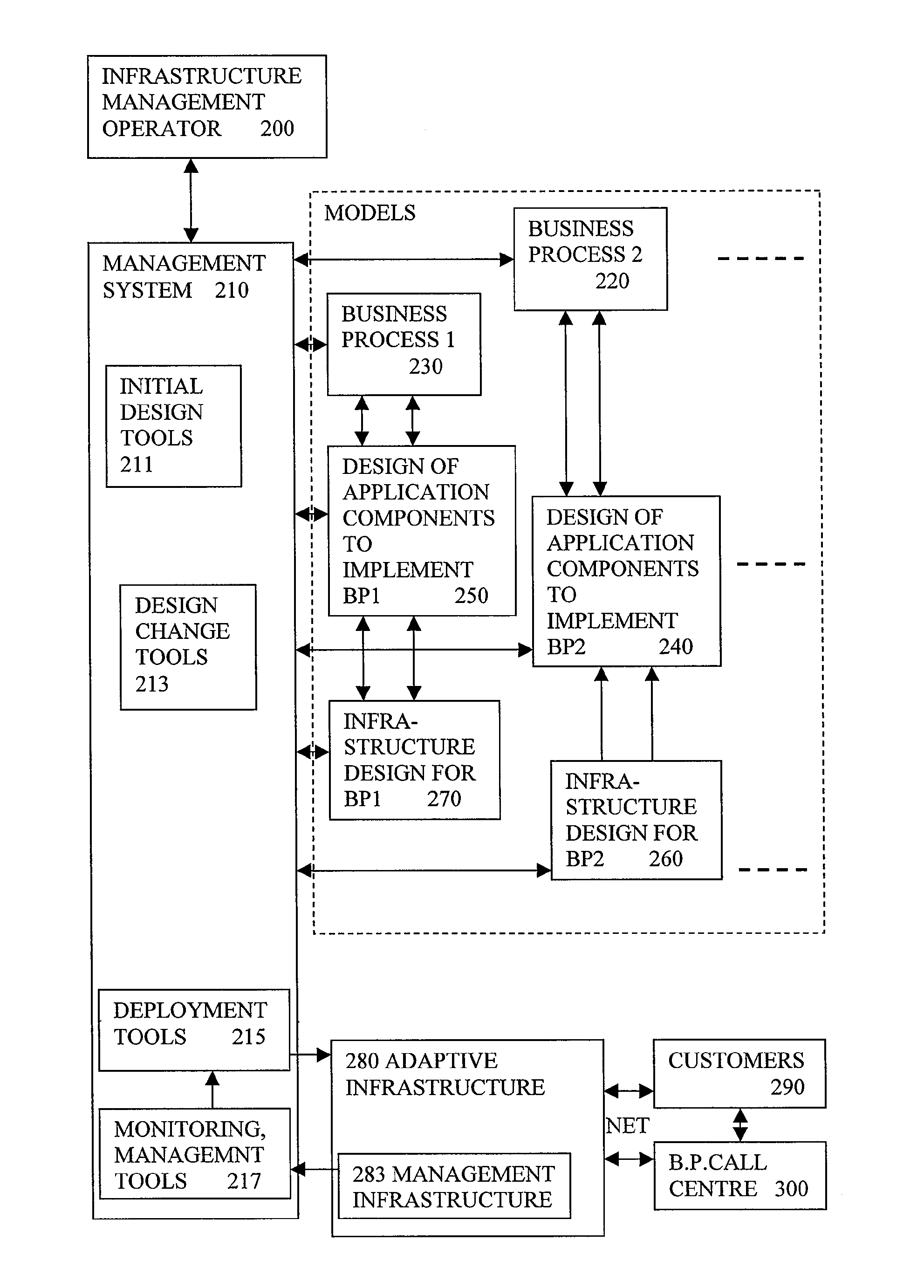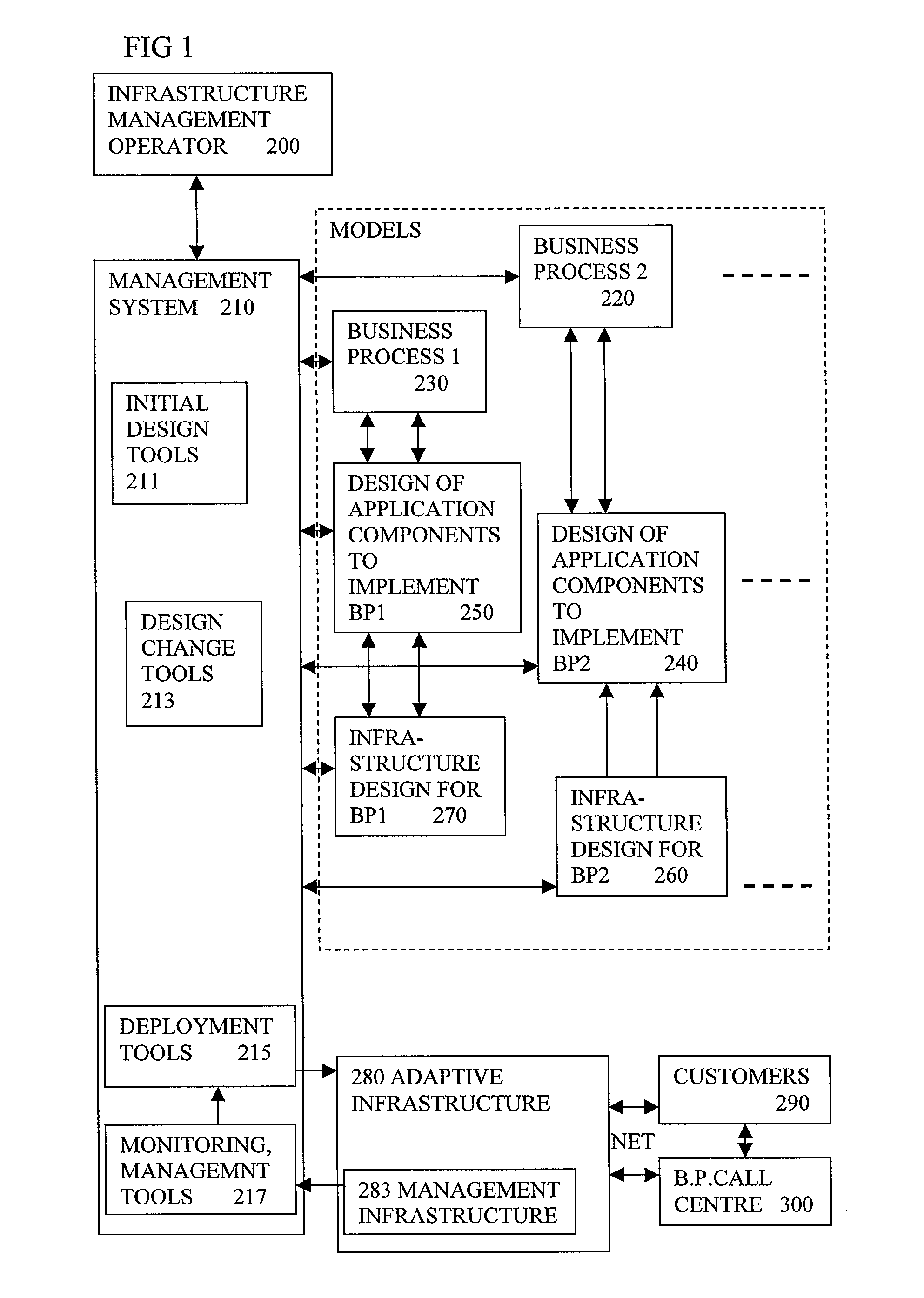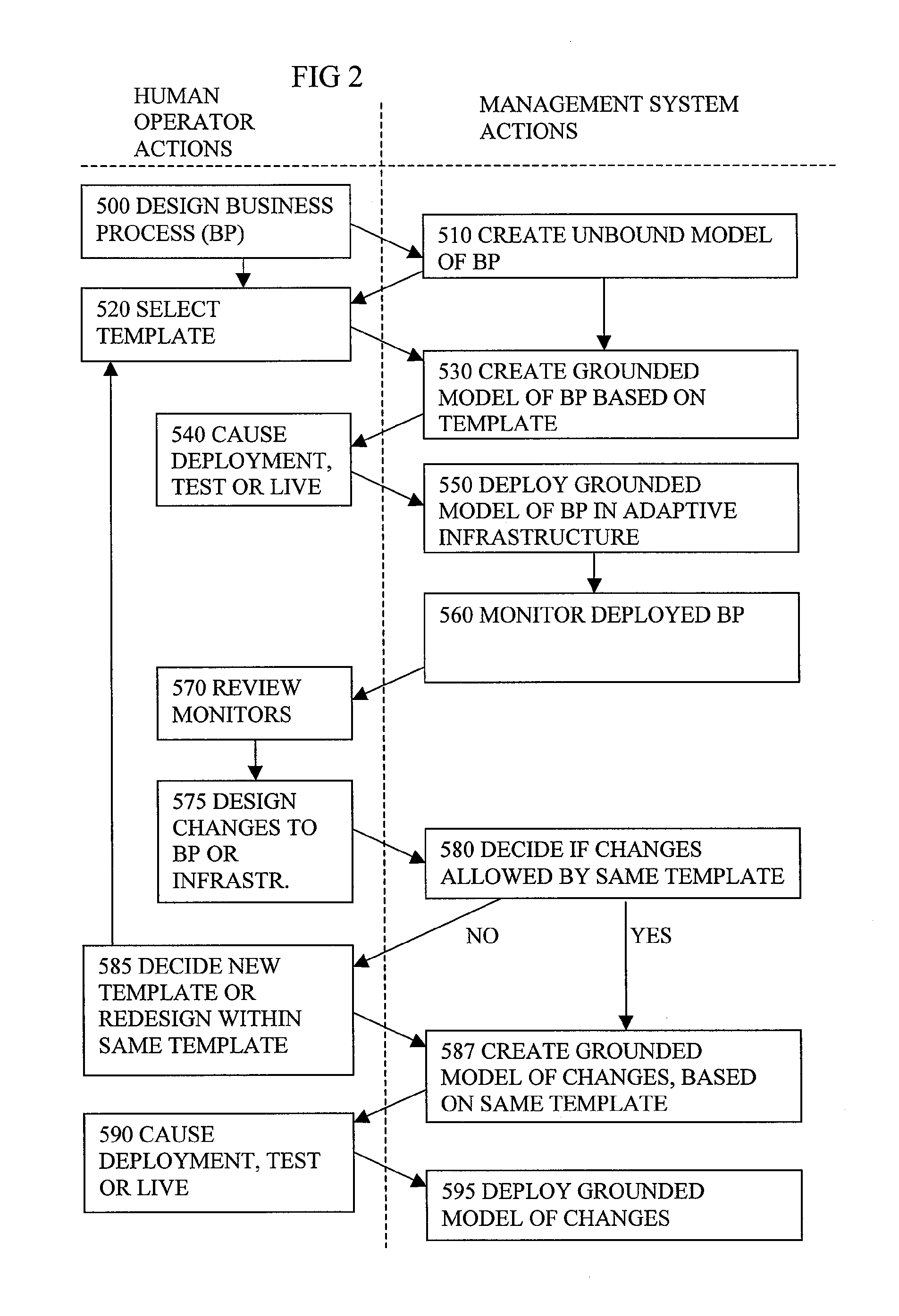Automated Model Generation For Computer Based Business Process
a computer-based business process and automatic model generation technology, applied in the field of automatic model generation for computer-based business process, can solve the problems of complex model full reconfigurability of the above, difficult management of physical it (information technology) infrastructure, and high cost, so as to reduce the risk of errors, improve performance prediction, and facilitate the effect of modeling
- Summary
- Abstract
- Description
- Claims
- Application Information
AI Technical Summary
Benefits of technology
Problems solved by technology
Method used
Image
Examples
first embodiment
FIGS. 16 and 17 a First Embodiment
[0069]FIGS. 16 and 17 show a first embodiment. FIG. 16 shows an overview of a system for generating a model of an existing business process. The business process runs on computing infrastructure 950, and has source code 910, typically stored elsewhere. There is source code specifying the functional steps of the business process and source code of software entities implementing the functional steps. Annotations 920 are added to the source code. A collector 930 collects the modelling information from the annotations. A modeller 940 is provided for generating parts of the model 960 from the information collected. The model can have modelled functional steps, and modelled software entities 980.
[0070]FIG. 17 shows steps of the system of FIG. 16 according to an embodiment of the invention. Information from annotations in source content is collected at step 900. At step 903 the system generates representations of functional steps of the business process fr...
example 1
Annotation of Business Process for Sales and Distribution
[0157]The ID field allows other annotation instances to uniquely refer to it. Several mechanisms are possible to associate the Source Content that defines the Business Process with the Business Process annotation. A typical use case might be that a complete Source Content File, describing the process, is tagged with the ID of the process and any resulting code for the process contains the BusinessProcess in its execution context. Alternatively, the tag is associated with only a sub-section of the Source Content file, and only the functionality generated from within that section adds the Business Process to the context passed down the invocation chain.
[0158]A Business Process is made up of the invocation of one or more related Business Process Steps. These Business Process Steps are semantically meaningful units of functionality that can be reused in more than one Business Process. The step itself is described in a BusinessProc...
example 2
Annotation of Business Process Step
[0159]When the relationship between Business Processes and Business Process Steps is known statically by the designers of the business processes, the relationships can be captured explicitly in the annotation. There are two possible, complementary, mechanisms that would allow tools to easily discover the invocation relationships with a simple static analysis:[0160]The Business Process Step annotation may refer explicitly to the set of Business Processes of which it is a part—this is represented in the set of bpid attributes in Example 2. This would be used when there is a definite intent, by the designer, for the step to be used at least by the specified processes.[0161]Explicit annotation could be added to the Source Content defining the Business Process to mark the invocation points of a Business Process Step—a BusinessProcessStepinvocation annotation would be used for this, simply specifying the ID of the Business Process Step.
These static annot...
PUM
 Login to View More
Login to View More Abstract
Description
Claims
Application Information
 Login to View More
Login to View More - R&D
- Intellectual Property
- Life Sciences
- Materials
- Tech Scout
- Unparalleled Data Quality
- Higher Quality Content
- 60% Fewer Hallucinations
Browse by: Latest US Patents, China's latest patents, Technical Efficacy Thesaurus, Application Domain, Technology Topic, Popular Technical Reports.
© 2025 PatSnap. All rights reserved.Legal|Privacy policy|Modern Slavery Act Transparency Statement|Sitemap|About US| Contact US: help@patsnap.com



